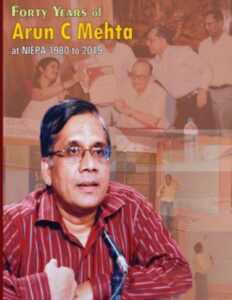School Mapping: An Analysis of Educational Facilities in Dhenkanal District
By N.V.Varghese and K.K.Biswal, National Institute of Educational Planning and Administration, New Delhi, India, 1999
The major objective of the study was to analyze the existing pattern of distribution of educational facilities between different geographical areas and to identify locations for opening of new schools. As part of the study an effort was made to examine the facilities available in the schools and to analyze households response to primary education through a household survey. The empirical analysis for the study was carried out in the block of Odapada in the Dhenkanal district of Orissa. The study used the methodology of distance matrix to identify locations to open new schools.
The conclusions of the study are based on a survey of 263 habitations, 121 schools and 3496 households. The major conclusion of the study is that there exists imbalances between school requirements and school provisions in the block. There are locations where number of schools provided is more than what is actually required, and there are locations in the block where schooling facilities are inadequately provided. If School Mapping exercises were undertaken perhaps 105 schools instead of 121 existing schools should have been sufficient to serve all the habitations in the block. In the absence of school mapping not only that there are 16 additional schools in the block but also that some areas are not yet served by the schooling facilities. It is sown in the study that 11 more new formal schools are required to provide schooling facilities to all habitations. If school mapping exercise was undertaken the Government would have saved investment in the construction of 26 primary schools.
The analysis of schooling facilities have clearly shown that most of the schools have one or two rooms with one or two teachers. The classroom facilities are very poor, therefore, the study argues that larger amount of money needs to be invested to improve facilities in the existing schools. In other words, the focus of attention in Odapada block needs to be on strengthening the facilities in the existing schools.
Most of the teachers in the block are males, however, in the recent past the share of female teachers in the recruitment and posting has increased as a result of that many female teachers are found in the schools. Very few teachers have received in-service training very frequently therefore, there is a need for looking more closely to look into the pattern for selecting teachers for training programmes.
The study shows that the household demand for education is very good in that area. Even when the household were poor they make an earnest effort to sent their children to school. The study also shows that the children who are now not attending schools are not engaged in any substantial household work or other activities. Mostly they are spending their time in playing. Contrary to the general believes majority of the households is spending any amount of fees. However, majority of the households does spend money on notebooks, textbooks and uniforms.





